Avoid These 7 Common Pitfalls in Virtual Event Marketing (+ Free Checklist!)

Maximize Your Marketing ROI
Join 10,000 other marketers already getting the best tips on running engaging events that boost pipeline and create raving fans.
Event marketers, we salute you.
Covid has hit the industry hard, making an already tough job even more challenging.
In fact, in the early months of the pandemic, 40% of event industry employees believed their companies might not make it through the year to come.
That’s why, with in-person events taking a back seat, virtual events have never been so vital to your marketing strategy — and your bottom line.
But virtual events come with their own challenges too.
Just like those in-person event pitfalls you’ve learned to avoid over the years, virtual events come with their own special set of fires that occasionally need putting out.
In this ultimate guide to what not to do in virtual events, we’ll save you precious time and revenue by sharing the most common errors, and some top tips on how to avoid them.
Pitfalls to avoid before your virtual event
#1. Getting the capacity wrong
Unlike in-person events, you don’t have to worry about catering and seating charts — but you do need to think carefully about the number of attendees at your virtual event.
The number of people you cater for depends on the type of event you’re hosting. For example, a company kick-off meeting may be more intimate than a conference, which in turn might have fewer attendees than a webinar.
Get it wrong and your event can feel impersonal, uninspiring or (at worst) amateur.
Deciding how many attendees to invite isn’t an exact science, but here are a few things to think about:
- The level of attendee interaction: For example, if you want a lot of personal engagement, you may need a smaller group or several breakout rooms.
- The activities you intend to run: For example, experiential events should be more intimate, while listen and learn events can be much bigger.
- The impression you want to make: While large events project a bigger, more corporate image, smaller numbers create a more personal, boutique vibe.
With Goldcast’s virtual event platform, you can engage small and large audiences with integrated features such as chat rooms, polls, Q&A sessions, emoji reactions, and more.
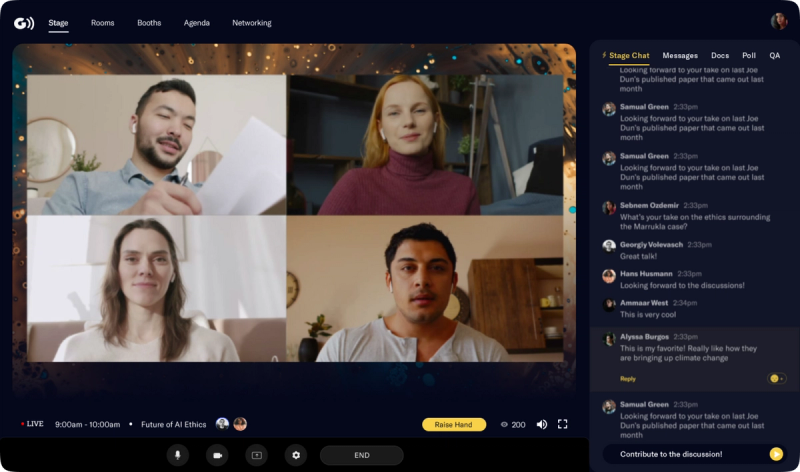
With Goldcast, you can host intimate fireside chats or large scale summits and ensure high engagement levels at both.
#2. Choosing the first virtual event platform you see
To avoid any speed bumps during the live event, you need to be selective about which platform you choose — especially because this is usually where the majority of your virtual event budget will end up.
The aim is to ensure your event runs smoothly and your brand’s integrity is upheld.
Choose the wrong platform provider and you risk leaving your brand underrepresented, your customers unengaged and your insights… well, uninsightful.
To avoid choosing the wrong virtual event platform, here’s what to look out for:
- The right data you need to prove ROI after the event
- All the format features fulfil your content requirements
- A variety engagement functionalities
- White label customization options
- Engaged support from your provider
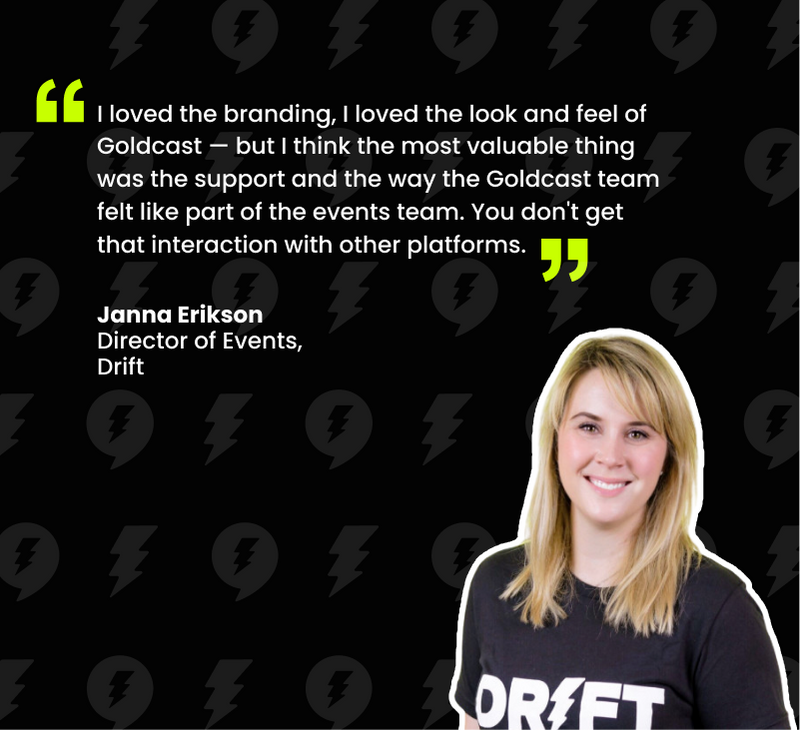
#3. Forgetting to build event anticipation
Most virtual events aim for more attendees, leads and ultimately conversions — without them, your event could turn out to be a pretty lonely affair.
Marketing your virtual event on the wrong channel, emailing an unengaged list or failing to prepare far enough in advance can lead to fewer registrations, fewer attendees and a rather unhappy C-suite when they look at their ROI.
Here’s a quick checklist reminder on how to market your virtual event:
- Know your audience: Deciding where to market and how to communicate your brand message is everything.
- Build a sign-up page: One which sells not only your event, but your brand. Remember, this is your final chance to obtain that golden email address, so make it count. (Think: time and date, agenda, speaker bios, sign-up box, payment options, etc.)
- Timing: Too early and they forget you, too late and they’re busy… exact timings depend on the type of event and your audience, so make sure to factor this in.
- Channel variation: Drive registrations (through social media, emails, partners and sales teams), leverage every option and create a strategy for each.
- Share the load: Ask your sponsors, partners, speakers and internal teams to spread the word and, when you start receiving registrations, encourage them to tell a friend.

When in doubt, find a virtual event platform that offers unbeatable support and features.
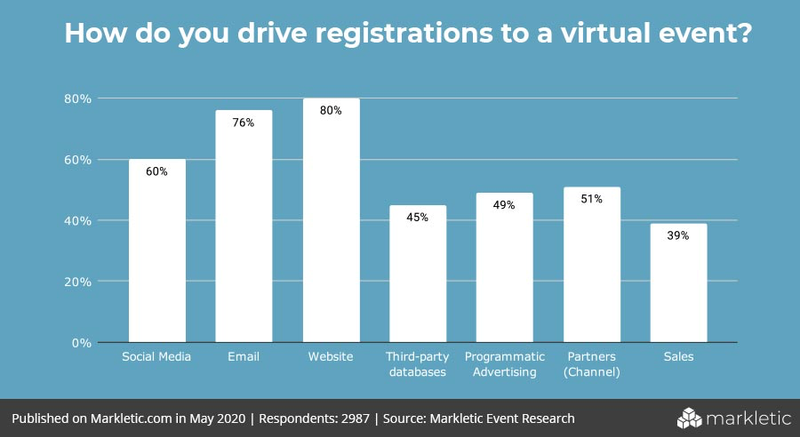
Website and email sit comfortably in top spot when it comes to the most popular ways to boost event registration numbers. [Source: Markletic Event Research]
Pitfalls to avoid during your virtual event
#4. Information overload
As a successful event marketer you can tell a great event from a mile off — they’re the ones where you feel a connection to the speaker and your fellow attendees.
In fact, 49% of marketers say audience engagement is the biggest contributing factor to having a successful event.
Without this connection, your audience has to work hard to stay engaged, focused and in the moment.
And if they have to do this, you’ve failed. 🙅
But, fear not — using a few simple and effective tools can prevent that ‘Left the Conference’ notification from appearing on your screen. #Awkward.
Why not try:
- Polls: Involving your audience tells them ‘Hey, your opinion matters’. With a whopping 81.8% of virtual event organizers using event polling to improve interaction, it’s a no-brainer.
- Entertainment: No one can focus 100% of the time, so invite expert speakers, a sommelier, musicians or a comedian — basically anything that will give your audience a fun break and make your event an experience.
- Gamification: 87% of event organizers look for this feature when selecting a virtual events platform, so think about incorporating something as simple as a points-based challenge based on how many virtual booths your audience attends.
- Videos: 61% of marketers use videos to keep audiences engaged, but with 32% saying they lack the skills to integrate them into presentations, make sure to use a reliable platform provider to support you.
- Q&A: An oldie but a goodie, rated one of the most popular engagement techniques and used by 62% of event organizers, there’s no excuse for not having it.
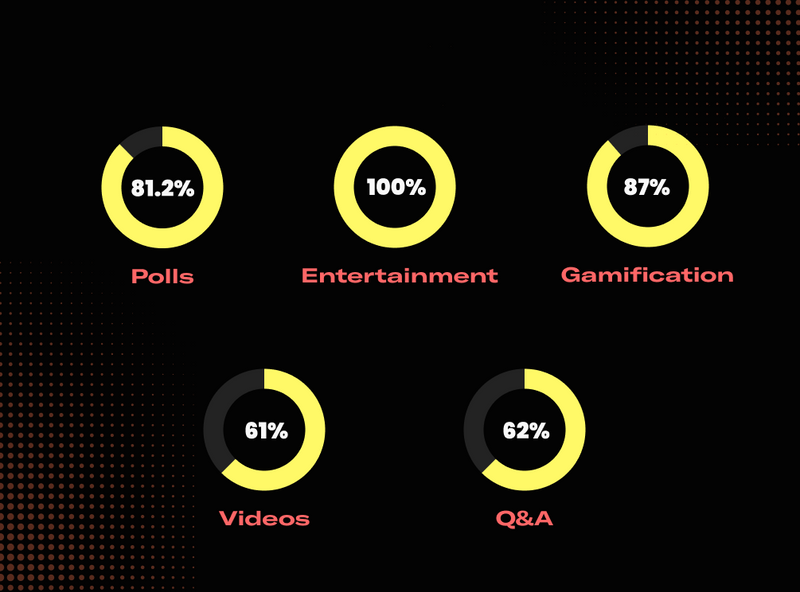
🔥 Check out how Smartling engaged their attendees and reached 42% live attendance with a Netflix-worthy virtual event.

#5. Ignoring the clock
We know you have a lot to say about how great your company is. But, honestly? Your audience isn't going to sit there and listen to it all.
These days, we’re all tired of staring at screens and given that we’re attending 3X more virtual events than before, it’s no wonder 88% of us have left an event early.
Here’s how to keep it short and sweet so your audience stays engaged until the end:
- Provide speakers with strict time slots and ensure Q&A time is factored in.
- Ask for (or make up) questions before the Q&A starts — silences aren’t just awkward, they’re time-consuming. ⏳
- Time each session and give the presenter regular notifications on how long they have left.
- Go through your presentation. Go through it again. And again. You’ll be shocked at how much fluff you can edit out.
- Rehearse, rehearse, rehearse…
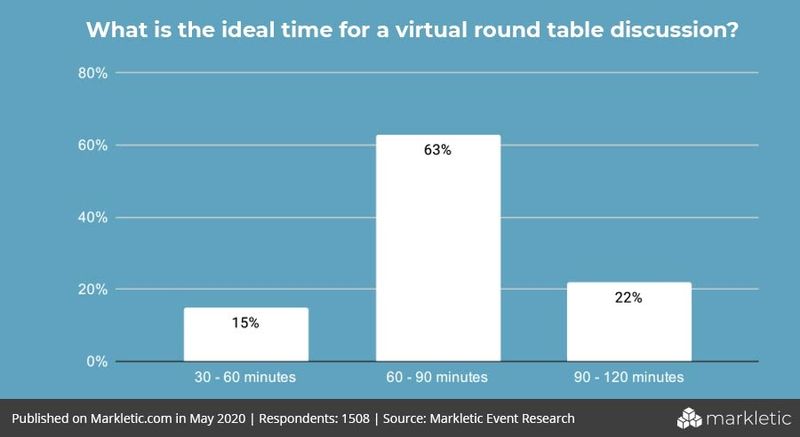
60-90 minutes is optimum for a round table discussion, but this varies between event types — be sure to research how long your sessions should be. [Source: Markletic Event Research]
Pitfalls to avoid after your virtual event
#6. Failing to create a community of brand-lovers ❤️
Building a community helps your attendees — but it also helps your bottom line.
Your brand is the attendees’ reason for being there, so they’re likely to talk about it — and the more they discuss, the more they involve themselves (and others) in your brand story.
Failing to build a community means you’re missing the most organic opportunity to create a loyal customer base… you’ve been warned!
So, how do you develop a community through a virtual event? Let’s break it down:
- Always follow up after the event to thank attendees for their support and share relevant follow-up information based on their onsite questions and experience.
- Social media is the number one place to forge your community — you can plug your accounts and hashtags before, during and after your event to keep the momentum going.
- Leverage your event content because there’s no point building a community if you’re not going to feed it regularly. Using a virtual event platform means you’ll already have reusable content.

#7. Playing hard to get
For experienced event marketers, following up with attendees is the obvious path — but that doesn’t mean everyone does it.
The problem is, failing to follow up after an event limits your chances to improve future events, convert prospects to clients, and build strong relationships with potential customers.
Before you move on from your event, here’s how to finish it off in the right way:
- Survey: With 90% of virtual event organizers using surveys to measure attendee satisfaction, it’s essential to give attendees a voice so you can improve next time.
- Content: Slides, videos, tips, blogs and podcasts all help your attendees continue learning beyond the event.
- Emails: Open rates for drip campaigns are 80% higher than single send emails, because each interaction develops your relationship further — make sure you send consistent emails before and after the event. Remember, customers who feel recognized by your brand are 90% more likely to buy from you.
- Thank you: Thanking attendees increases the likelihood of further interactions with your brand by 100%... so say it!
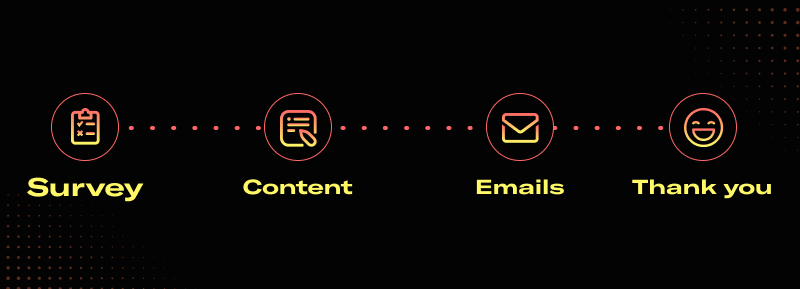
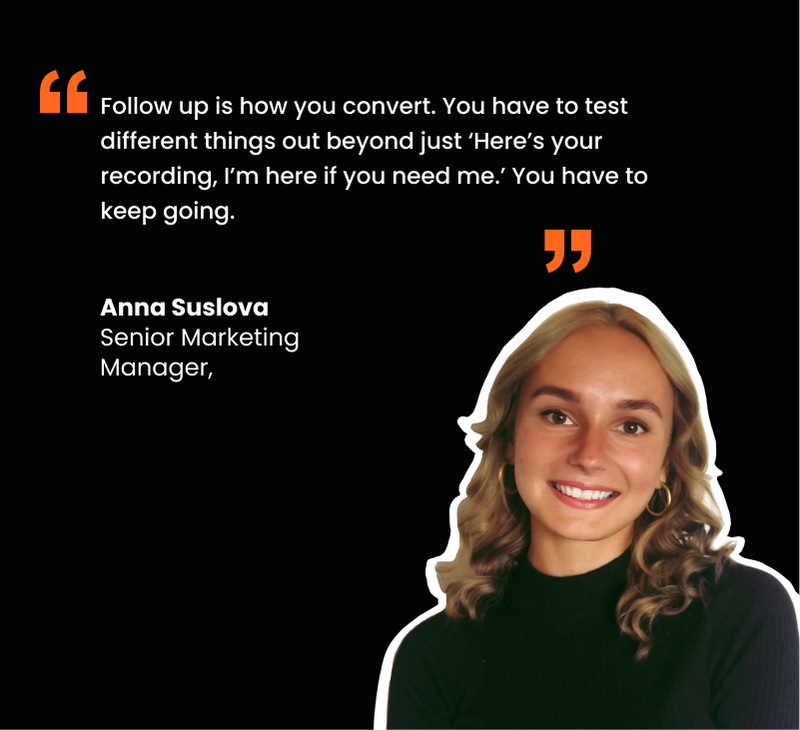
Strong pre-event planning + engaging content = Event marketing pitfalls avoided 👏
Even for an event-planning pro, transitioning to virtual events in the middle of a global pandemic is a rough road.
But by avoiding these seven pitfalls, you’ll be well on your way to regaining that event marketing superhero status you’ve always held (with virtual events as your newest superpower).
If in doubt, remember these three words:
- Planning
- Engagement
- Relationships

And when you’re ready to excel at all three, remember just one name: Goldcast ✨

Transform Your Video Marketing with AI
Stay In Touch
Platform
Resources
© 2025 Copyright Goldcast, Inc. All rights reserved.





 Upcoming Events
Upcoming Events Event Series
Event Series On-Demand Events
On-Demand Events

